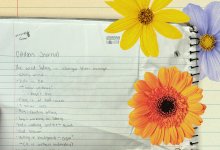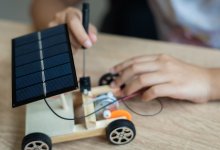- Administration & Leadership
How to Harness the Multiplier Effect as a Principal
Talent development expert Liz Wiseman tells us how principals can bring out the best in everyone on their staff—and avoid being a diminisher, who does the opposite.Your content has been saved!
Go to My Saved Content. - Technology Integration
A Multisensory Approach to Teaching Slope With Sound
This three-part, ears-on lesson blends sound and visuals to help middle schoolers make sense of linear relationships.Your content has been saved!
Go to My Saved Content. - Literacy
Planning an Open Mic Literacy Night
This fun event gives students the opportunity to perform poems and short stories in front of their families and teachers.Your content has been saved!
Go to My Saved Content. - Student Voice
How Student-Led IEP Meetings Promote Self-Advocacy
When students lead their IEP meetings, they can speak up for their needs—and take an important step toward forging their own path, in school and in life.Your content has been saved!
Go to My Saved Content. - Research
The 10 Most Significant Education Studies of 2025
We’re back with our roundup of the most insightful studies of the year, from the power of brain breaks to groundbreaking research on AI, cell phones, and handwriting in the classroom. - Administration & Leadership
Connecting School Values and Student Well-Being
Aligning your social and emotional learning curriculum with a clear set of values helps students see the relevance and importance of those lessons.106Your content has been saved!
Go to My Saved Content. - Student Engagement
5 Simple-to-Play Indoor Classroom Games
When the weather outside is frightful, the right activity can transform students’ pent-up energy into laughter, movement, and focus.113Your content has been saved!
Go to My Saved Content. - Technology Integration
How to Create Effective 15-Minute SEL Activities
Teachers can use a variety of tech tools to create short social emotional learning activities that fit easily into the classroom routine.Your content has been saved!
Go to My Saved Content. - Administration & Leadership
How to Successfully Institute Student-Led Conferences at Your School
A middle school principal on how teachers, students, and families have benefited from an initiative that guides students to take ownership of their learning. - Environmental Education
The Benefits of Nature Journaling in English Class
While observing outdoor settings, students pay attention to specific details and employ critical thinking as they sharpen their writing skills.
Popular
- Formative Assessment
13 Super-Quick Formative Assessments
Teachers can use these techniques to gauge students’ understanding mid-lesson and then decide whether to reteach or press ahead. - Student Engagement
3 Ways to Prime Students’ Brains for Achievement
Using priming language is a powerful way to set the stage for learning, and we’ve got a free downloadable word bank here to help you implement this research-backed strategy. - Teaching Strategies
Concrete, Pictorial, Abstract: Using the CPA Method in Upper Elementary Math
Teachers can help students build deeper math understanding and confidence by introducing concepts in distinct stages. - Research
The 10 Most Significant Education Studies of 2025
We’re back with our roundup of the most insightful studies of the year, from the power of brain breaks to groundbreaking research on AI, cell phones, and handwriting in the classroom. - Research
5 Research-Backed Ways to Build Better Readers
The latest research on five foundational strategies that are teacher-tested and grounded in science.560Your content has been saved!
Go to My Saved Content.
- Classroom Management
Digital Wellness in the Age of Cell Phone Bans
Although policies can help create structure, they don’t build consistent digital habits—those have to be taught, modeled, practiced, and reflected upon.138Your content has been saved!
Go to My Saved Content. - Technology Integration
A 4 Step Process for Adding New Tech Across Your Whole School
Administrators can use this framework to determine whether a tool will actually be used by teachers and useful to students.148Your content has been saved!
Go to My Saved Content. - Technology Integration
A 7-Step Process for Implementing Green Screen Projects
Green screen isn’t just a flashy tool—it can support collaboration and boost students’ confidence as they get creative.154Your content has been saved!
Go to My Saved Content. - STEM
How STEM Projects Support Belonging in Middle School
When students engage in hands-on, collaborative problem-solving, they see themselves as essential to their classroom community.135Your content has been saved!
Go to My Saved Content. - Technology Integration
Strategies for Maximizing Google Docs in Middle and High School
This common tool that you use every day can facilitate student collaboration and engagement in learning.351Your content has been saved!
Go to My Saved Content.
- English Language Learners
Sentence-Level Scaffolds That Foster English Learners’ Independence and Growth
Teachers can structure supports to guide English learners to speak and write using grade-level, discipline-specific language.214Your content has been saved!
Go to My Saved Content. - English Language Learners
Adapting Gradual Release of Responsibility for English Language Learners
This model provides scaffolded active engagement and opportunities for guided practice to help students master new skills.467Your content has been saved!
Go to My Saved Content. - Communication Skills
How Podcasting in the Classroom Boosts Communication Skills
When students practice their oral communication skills by making podcasts, their writing, speaking, and storytelling abilities blossom.Your content has been saved!
Go to My Saved Content. - Literacy
Problem-Solving Discussions in Elementary Math
Creating opportunities to talk about math builds understanding and strengthens language development for all students—particularly English language learners.271Your content has been saved!
Go to My Saved Content. - English Language Learners
Using an Input-Output Loop to Help Newcomer Students Learn Class Content
Teachers can carefully chunk information to support newcomer students in learning grade-level content while developing their English proficiency.467Your content has been saved!
Go to My Saved Content.
- Formative Assessment
Fun Formative Assessment Activities Inspired by UDL
Varying the format of comprehension checks guides students to demonstrate learning and provides teachers feedback on progress.319Your content has been saved!
Go to My Saved Content. - Formative Assessment
13 Super-Quick Formative Assessments
Teachers can use these techniques to gauge students’ understanding mid-lesson and then decide whether to reteach or press ahead. - Formative Assessment
Crafting Data-Driven Narratives About Students
Telling stories with and about data helps students better see themselves as learners and helps teachers center them in the classroom.445Your content has been saved!
Go to My Saved Content. - Assessment
Using Oral Assessments to Enrich Our Understanding of Student Learning
If you’ve ever had the sense that grades didn’t truly reflect what students had learned, formal and informal talks can give you more data and a more accurate picture. - Formative Assessment
The Power of Formative Assessment in Elementary School
Using frequent ungraded classroom assessments can help teachers guide students to focus more on learning and less on test scores.475Your content has been saved!
Go to My Saved Content.



























